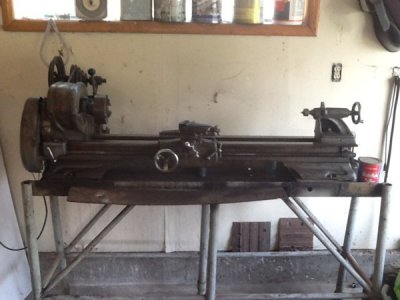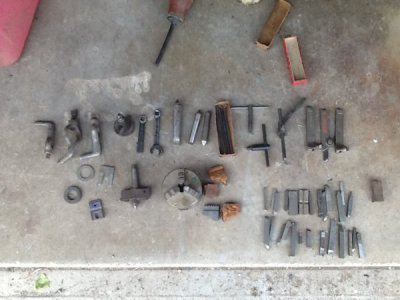A 10" Atlas with a 48" bed would be a 10x30. With the babbit bearings and that change gear cover, it should be an early relatively rare 10F. Deciding factors are if it has a 5/8" diameter lead screw and no power cross feed, it is a 10D. If it has a 3/4" diameter lead screw and power cross feed it is a 10F. There weren't too many babbit bearing 10F's sold. Look on the rear of the bed for a nameplate. If it is still there, the modal number should be either V48 or H48, depending upon whether it has a Vertical or a Horizontal Countershaft assembly.
The two main disadvantages of the babbit bearings are that you don't want to run them too much above say 1000 RPM. Which is definitely not an issue when threading. And if they are badly worn, replacing them today usually means another headstock. It is possible to re-pour them but it definitely is not a Saturday afternoon project. Otherwise, a lathe with babbit bearings can produce just as good work as pne with roller or ball bearings. AFAIK, all of the South Bend lathes of the period had somewhat similar bearings.
What you would want to do is to pull the two bearing caps and check the spindle journal condition. And measure the remaining thickness of the two shims that should be under each bearing cap. From the factory, the original shims consist of five 0.002" thick shims laminated into one 0.010" shim. As the bearings wear, laminations are removed to take up the clearance. When you remove the bearing caps and shims, be sure that you keep up with which shim was front and which was rear because when adjusting for wear, you would first remove one lamination from say the front and put the cap back on and check clearance. If still excessive, you would remove the cap and remove one lamination from the rear shim. And so on.
How good a price $400 is depends on a lot of factors, chief among them are location, overall condition, spindle and bearing condition, bed condition, and what else comes with the lathe.


